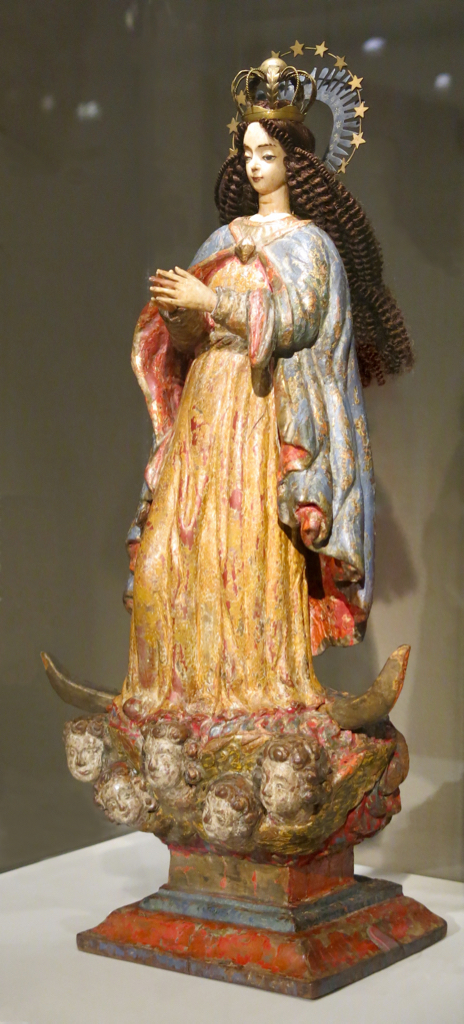On a recent visit to the Asian Art Museum, I saw a beautiful mixed media sculpture of the Virgin Mary. The body of the sculpture was made of wood, the head and hands of ivory, a crown of stars of metal, and the hair of actual human hair.

When Westerners think of Asian religious art, they tend to think of Buddhas and Ganeshas and Guan Yins, forgetting that Christianity has had a presence in Asia for more than 1900 years. So of course there are Asian Christs and Asian Marys.
This Virgin Mary was made in the Philippines, to whence Christianity was brought by European Christians about five hundred years ago. The sculpture cannot be precisely dated, but was made sometime between 1650 and 1800.
Anyone familiar with European Christian art from the Middle Ages and the Renaissance will recognize the iconography of Mary standing on a crescent moon. But some of the details feel Asian. Mary’s facial features do not look stereotypically European, and according to the wall label next to the sculpture, “Early Spanish reports describe artists of Chinese descent as well as Filipino artists carving these images in the Philippines.” The treatment of the draped fabric feels non-European to me, especially Mary’s blue robe, which takes on a life of its own in a way that European Renaissance sculptures, based on classical models, never do; it feels more like the flowing, moving fabric found on some Chinese sculptures, or even on some Medieval European sculptures. I particularly like the use of human hair, a material that anchors Mary in the human realm, and keeps her from drifting into a realm of inaccessible transcendence.
In short, here is a deity that incorporates European iconography with Asian forms and sculptural traditions; she is a globalized deity who also links the human to the transcendent realms.
